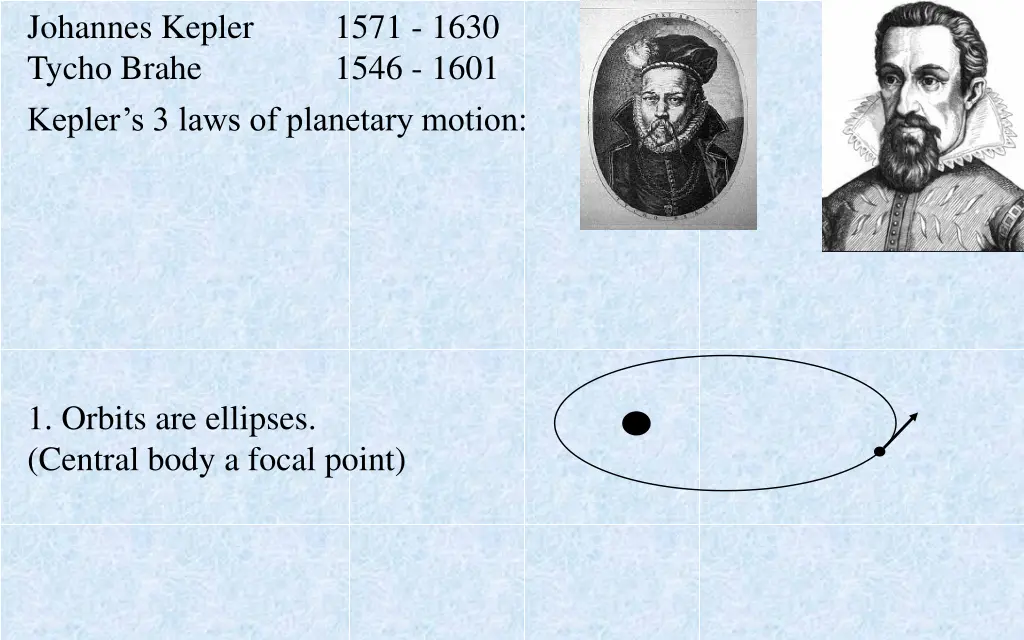
Laws of Planetary Motion by Johannes Kepler and Tycho Brahe
Explore Johannes Kepler and Tycho Brahe's 3 laws of planetary motion, including ellipses, equal area in equal time, and deriving period radius. Delve into calculating geostationary orbit radius and determining Mars's year based on its distance from the sun.
Download Presentation

Please find below an Image/Link to download the presentation.
The content on the website is provided AS IS for your information and personal use only. It may not be sold, licensed, or shared on other websites without obtaining consent from the author. If you encounter any issues during the download, it is possible that the publisher has removed the file from their server.
You are allowed to download the files provided on this website for personal or commercial use, subject to the condition that they are used lawfully. All files are the property of their respective owners.
The content on the website is provided AS IS for your information and personal use only. It may not be sold, licensed, or shared on other websites without obtaining consent from the author.
E N D
Presentation Transcript
Johannes Kepler Tycho Brahe Kepler s 3 laws of planetary motion: 1571 - 1630 1546 - 1601 1. Orbits are ellipses. (Central body a focal point)
Johannes Kepler Tycho Brahe Kepler s 3 laws of planetary motion: 1571 - 1630 1546 - 1601 2. Objects sweep equal area in equal time (closer = faster)
Johannes Kepler Tycho Brahe Kepler s 3 laws of planetary motion: 1571 - 1630 1546 - 1601 R2 R13 R23 T12 T22 3. Period Radius (Derive from orbit) R1 =
What is the radius of a geostationary orbit (T = 1 day) if for the moon T = 27.4 days, R = 3.8 x 108 m R1 = ?? T1 = 1 day R13 = R23 T12 = T22 R2 = 3.8 x 108 m T2 = 27.4 days R1 = (R23/T22*T12)(1/3) = 41810294 = 4.2 x 107 m 4.2 x 107 m
Mars is 1.524 AUs from the sun. If our year is 365.26 days long, how many earth days is Mars's year? R1 = 1.524 AU T1 = ??? R2 = 1.000 AU T2 = 365.26 days R13 = R23 T12 = T22 687.2 days
